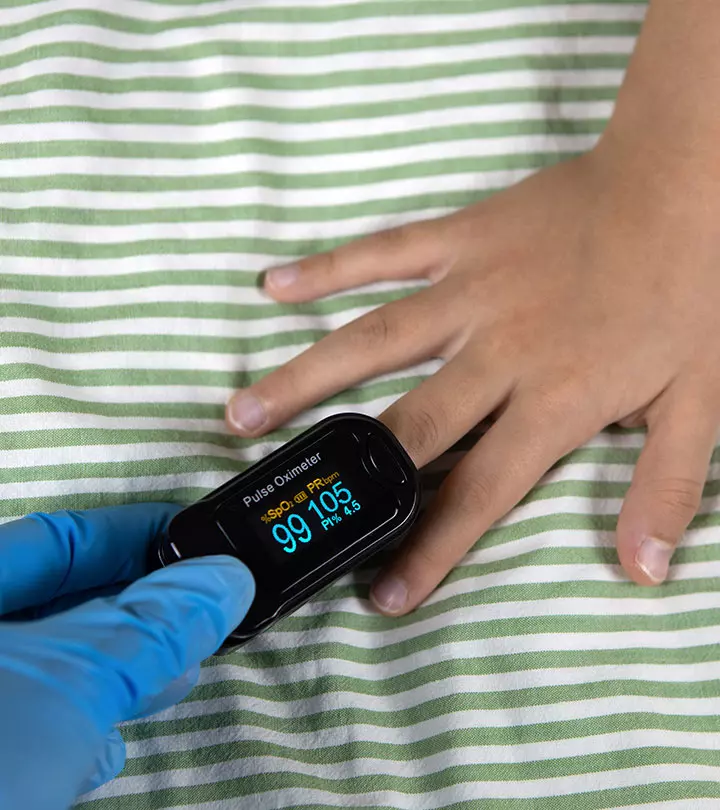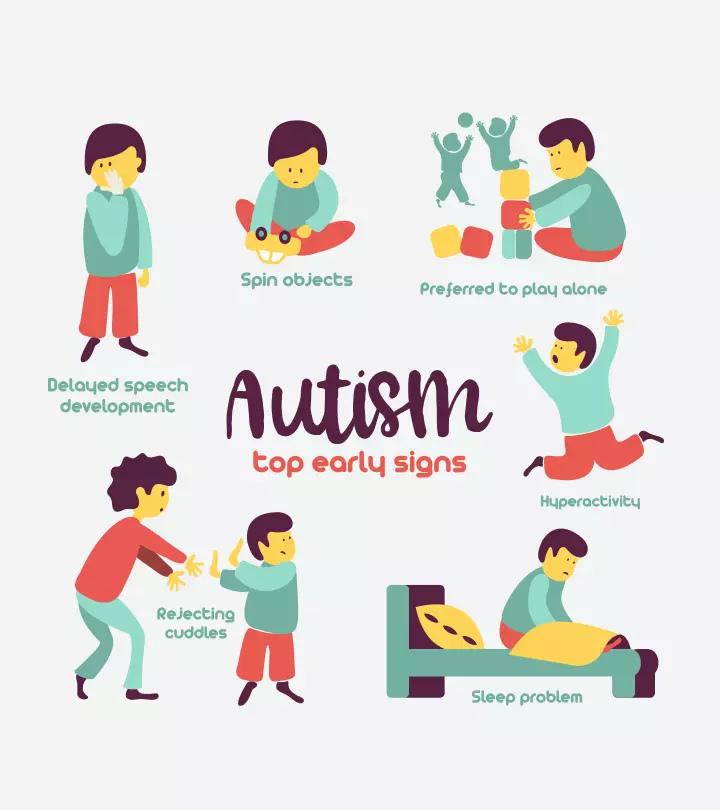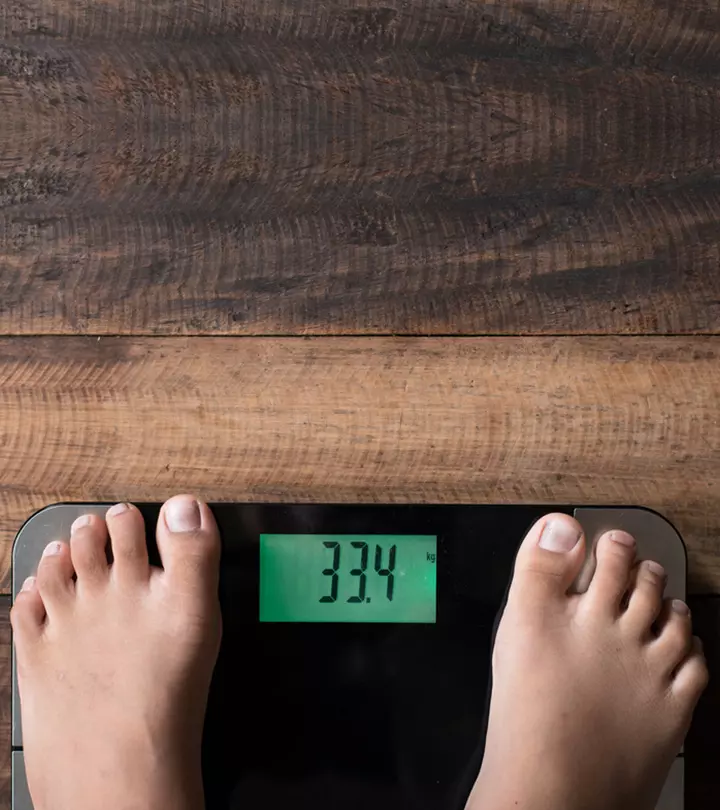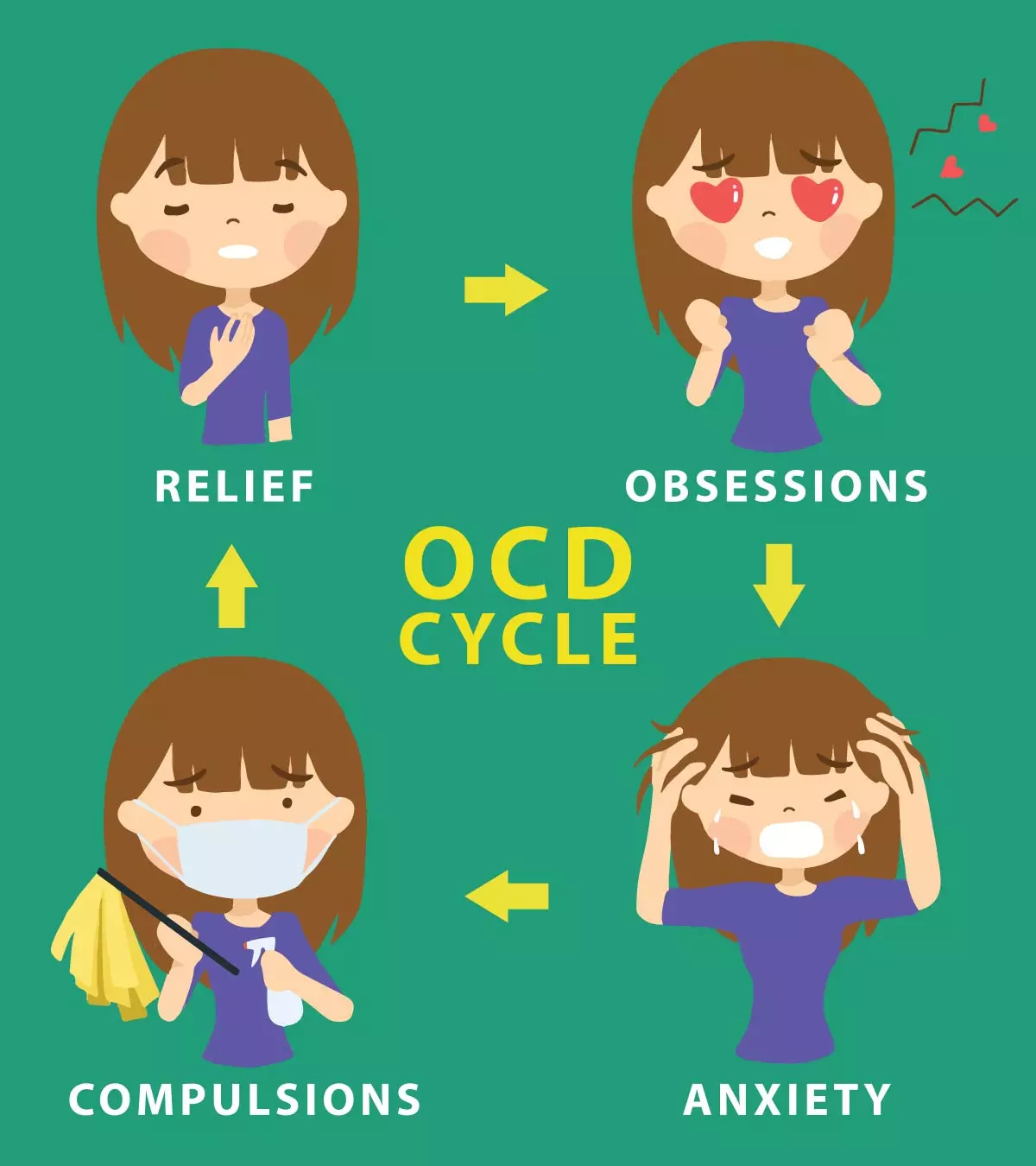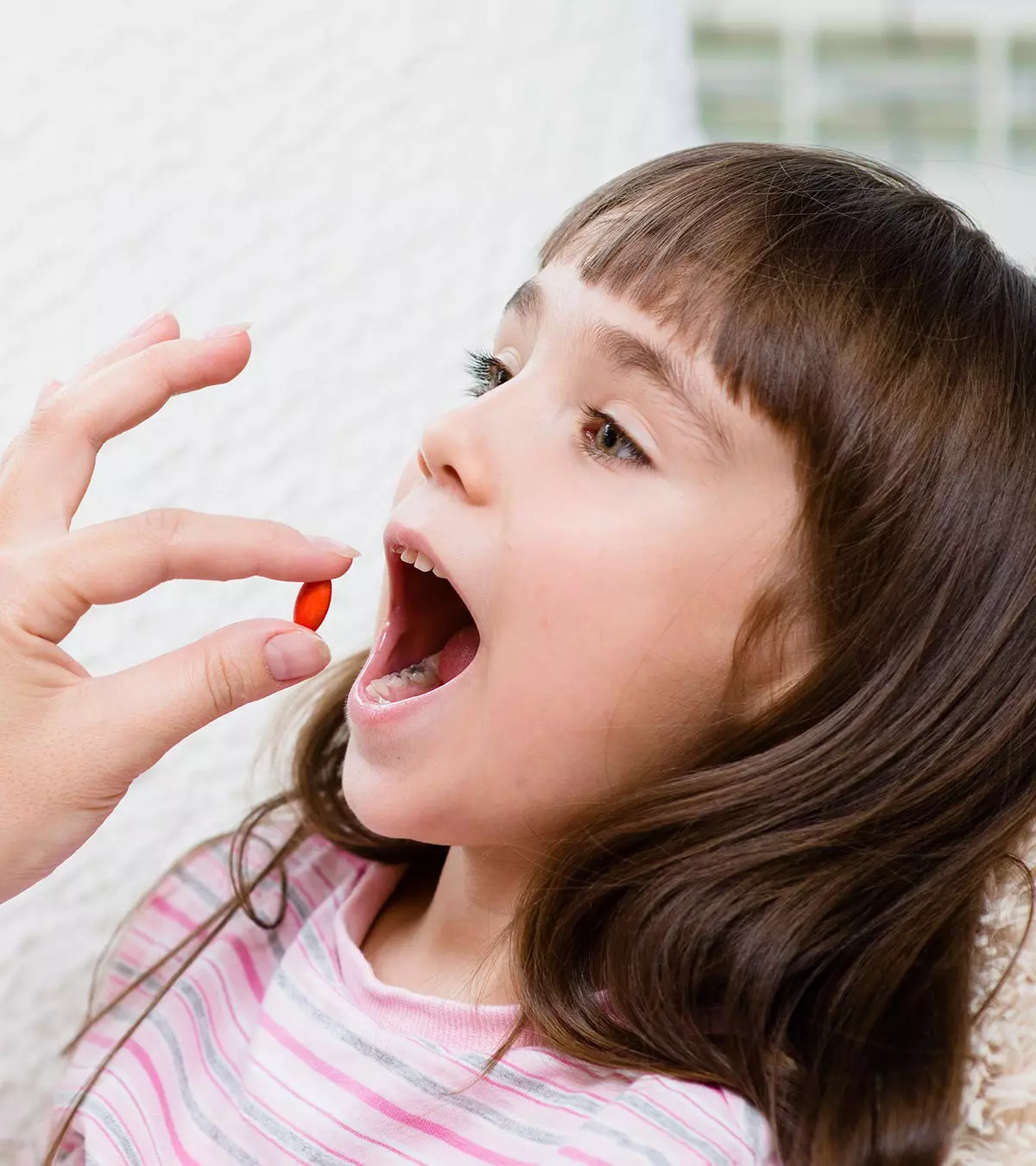
Image: iStock

Enema for children is recommended to relieve severe constipation. Enema is a procedure where fluid is injected into the rectum via the anal opening. It helps in expelling impacted stools. Disimpaction of hardened stools is necessary before commencing any maintenance therapy. Doctors recommend enema only when the child does not respond to dietary changes such as consuming a fiber-rich diet and oral laxativeiSubstances that regulate bowel movements and prevent or treat constipation medications. Moreover, it may be used to clear the bowel before surgery, administer some medications, or permit imaging (X-ray) for diagnostic purposes (1) (2). Read this post to learn about the types of enema in children, its method of administration, side effects, and precautions.
Key Pointers
- Pediatricians recommend the type of enema depending on the child’s age and underlying cause. Requirements of enema solutions also vary with age.
- You may do an enema as recommended and keep the child occupied on some games during the process.
- Enema can cause side effects such as abdominal pain, dizziness, vomiting, and bloating. It should be done if the healthcare provider prescribes since some digestive issues may worsen with an enema.
What Are The Types Of Enema For Children?

The type of enema used depends on the child’s condition and the doctor’s recommendation. Various types of enemas serve different purposes, from easing constipation to assisting in medical diagnoses. The fluid enters the rectum during an enema, softens the stools, and stretches the rectum, increasing bowel movement and urge to pass the stools. Below are some common types of enemas used for children (3) (4).
- Sodium phosphate enema (available as Fleet’s enema, Pedia-Lax enema): Contains water and phosphate, and the unabsorbed phosphate retains water in the colon.
- Normal saline enema: Contains salt water solution only.
- Mineral oil enema: Performed using mineral oil only.
- Soap suds enema: Contains water with a small quantity of soap. The soap suds cause mild irritation and stimulation in the colon, leading to the urge to pass stools.
- Milk-molasses enema: Contains lactose (milk sugar), milk protein, and molasses. Retains water as none of the ingredients get absorbed from the colon.
Saline and mineral oil enemas are considered safe options for children with constipation due to the minimal risk of adverse effects. However, frequent or repeated use is not recommended as it may lead to mechanical trauma (5). Enemas or their ingredients are available over the counter (OTC) in pharmacies, but you should consult a pediatrician before giving them to children.
Enemas that are used for purposes other than constipation include the following.
- Air enema: The fluid is replaced with air released under high pressure. It is predominantly used in the treatment of intussusception, where one section of the intestine folds on itself. The air enema helps push the bowel back into the right position (6).
- Barium contrast enema: It is used for colon and rectal examination (large bowel) through X-rays. A radiologist or radiographer carries out the test to diagnose the root cause of problems such as constipation, abdominal pain, unexplained weight loss, anemia, or chronic diarrhea in children (7).
 Caution
CautionDoctors typically recommend either a sodium phosphate solution enema or a saline (salt water) enema for children (9).
What Age Is Appropriate For Enema?
Most enemas, especially those containing sodium phosphate, are not recommended for children below two years of age. However, experts have different opinions on the safety of phosphate enemas for young children. As per a report by the American Academy of Family Physicians, “Some experts do not recommend phosphate enemas for children younger than 4 years; others do not recommend the enemas for children younger than 2 years (10).”
The amount of solution required depends on your child’s age and body weight. Children aged 5 to 10 years require one full bottle of a child-size enema, while those aged 2 to 4 years need only half of a child-size enema. For older children and teenagers aged 11 to 19 years, one bottle of an adult enema is used (10). However, it is advisable to consult your healthcare provider before starting an enema for your child (11).
What Is The Dosage Of Enema For Children?
The dosage depends on the age and body weight of the child. Some enemas are available OTC in pharmacies, and you must check with your doctor to find out the correct product and dosage for your child. General instructions for the enemas commonly used in children may include the following.
- Fleet’s phosphate enema is available ready-to-use in small-size (2.25 ounces) packages for children. If your child is two to five years of age, give half the contents of the small-size enema pack (12). For that, remove half of the pack’s content before starting the procedure.
- For mineral oil enema, about two ounces is sufficient for children aged two to six years.
- Saline enemas may be prepared at home by mixing two teaspoons of table salt in 33 ounces (one liter) of tap water (13).
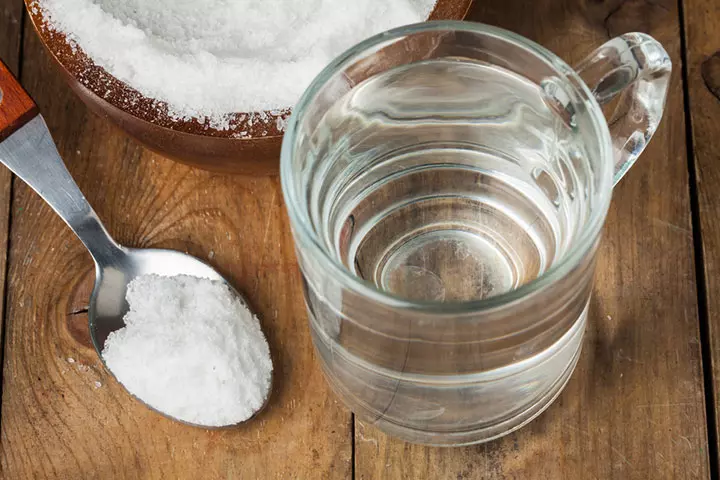
- Soap studs and milk-molasses enemas vary in their formulation and are prepared as per the instructions from the healthcare provider. It is not a common option for home treatment and is mostly performed in hospital settings.
How Is Enema Given To A Child?
Ready-to-use enema formulations (mostly for phosphate enemas) come in bottles with nozzles for application to the anus. Otherwise, supplies needed include an enema bag with soft silicone tubing (Foley catheter available at pharmacies), water-soluble lubricant (not petroleum jelly), measuring cup, and the enema ingredients as per the doctor’s instructions (13) (14).
It is important to prepare your child by explaining why you are giving the enema and the process involved. Children tend to respond better when they understand and cooperate. It takes about 45 minutes for the complete process. Try to keep your child occupied with games, music, or videos.
You may begin the process by positioning the child. Position your child in the following ways.
- Lie on the left side with right leg bent towards the chest
- Lie on the back with legs bent towards the chest (as when changing a diaper)
- Lie on the stomach or over your lap with knees bent to the chest
Below are the steps to give an enema to the child.
- Wash your hands with soap and water.
- Clamp the tubing of the enema bag and pour the enema mix into it.
- Mix evenly by gently rubbing between your palms. Warm the bag mildly under running warm tap water.
- Carry out the procedure on a tiled floor instead of a carpeted one. Place a clean towel below your child’s hips.
- Open the clamp and let the enema fluid flow out to fill the entire tube. Clamp the tube using the roller clamp.
- Lubricate the tube after removing the protective cap from its tip.
- Gently insert the lubricated tip approximately three inches into the anus.
- Make your child take slow, deep breaths through the mouth to help relax the rectal muscles.
- Slide the clamp to open the tube (moving the clamp also controls the rate of flow). Raise the bag 12-18 inches above your child’s hips to ensure a steady but slow flow of the liquid.
- If the flow stops due to stool clogging the tip, remove and clean it with soap and water. Apply adequate lubrication before reinserting and continuing with the process.
If your child complains of cramps, pain, or severe discomfort, stop the enema temporarily and restart after a few minutes. Have your child remain in the same position until the urge for bowel movement becomes strong, which is usually after five minutes. Take the child to the toilet, where they will pass stools with the enema solution. You may observe the consistency of stools to report its attributes to the child’s doctor.
 Point to consider
Point to considerWhat Are The Side Effects Of Enema For Children?

Enemas may have certain side effects such as (16):
- Nausea
- Discomfort associated with the digestive system
- Abdominal pain
- Bloating
- Discomfort such as stinging or blistering in the anal area
Some serious side effects for which you should seek medical help include:
- Vomiting
- Dizziness
- Swelling in hands or feet
- Reduced urination
What Precautions Should Be Taken When Administering Enema?

Precautions that need to be taken when using enema in children are (14) (15) (17):
- Consult a pediatrician first if your child has any existing gastrointestinal or renal problems. Inform the doctor about any laxative or stool softener medication taken by your child in the past two weeks.
- Enemas may cause dehydration and disturb electrolyteiEssential minerals such as sodium, potassium, chloride, and bicarbonate present in the body. levels. Make sure your child drinks a lot of water and liquids before and after the medicinal procedure.
- The solution should not be infused too fast as it may cause dizziness.
- Ensure you apply adequate lubrication on the tube’s tip to minimize any discomfort and make removal easy.
- Pay attention to any unusual pain or discomfort.
- Ensure the enema solution is at a safe temperature (lukewarm, not hot or cold).
- Never force the tube if resistance is met.
- Monitor for signs of discomfort, pain, or distress.
- Do not exceed the recommended enema frequency, as overuse may cause dependency or irritation.
- Usually, one enema a day is sufficient. Ask your doctor how long you should continue administering enema to your child to provide relief, and always follow the instructions for administering enema.
When To See A Doctor?

Consult a doctor immediately in the following scenarios.
- The enema is unable to cause a bowel movement.
- The child complains of pain that does not stop after the procedure.
- You notice rectal bleeding during or after the procedure.
- The child develops diarrhea after the enema.
- The child vomits, has seizuresiAbrupt, uncontrollable physical movements and behavioral changes driven by irregular electrical activity in the brain. , or has altered alertness after the procedure.
- The child experiences frequent stool accidents (accidental or involuntary passing of motion) after an enema.
Enema for children is a useful tool to clean the colon and relieve severe constipation. It’s a treatment modality doctors advise when a child doesn’t respond to dietary changes and medications, such as stool softeners. Various types of enema are available over-the-counter. However, it is best to consult a doctor to know which enema type will work best for your child. Generally, enema is not advised for children under two years, and for those above two, the dosage varies based on their age and body weight. Knowing the necessary precautions and the right way to administer an enema is essential to ensure its safety for your child.
Frequently Asked Questions
1. What happens if poop doesn’t come out after an enema?
If an enema does not successfully remove impacted stools, a doctor may perform manual removal (8). The child’s doctor may use suppositoriesiA round or cone-shaped object used to deliver medicines in the body, mainly the rectum or vagina. during the process to help clear the stool.
2. Can I use tap water for enema?
You may use tap water to prepare saline enemas at home. Although rare, softened tap water may increase the risk of hyponatremiaiLess than usual sodium levels in the body. and hypochloremiaiLess than usual chloride levels in the body. if used for preparing enemas (19). It is advisable to use distilled water instead.
3. Are there any dietary or lifestyle changes that can help prevent the need for enemas in children?
Dietary and lifestyle changes for children could reduce and prevent constipation, which could help avoid the need for enemas. Foods to relieve constipation in kids include fruits, vegetables, whole-grain cereals and bread, and fluids. Also, limiting fast food in their diet could help prevent constipation. Additionally, exercising daily and encouraging healthy bowel habits could induce positive results (20). However, if these changes do not yield fruitful results, it is important to consult with a pediatrician for accurate diagnosis and treatment.
Infographic: Why Is An Antegrade Continence Enema (ACE) Better Than Retrograde Enema?
An antegrade continence enema is given through surgically created openings on the abdominal wall and intestine. The catheter delivers enema solution to the intestine, and a bowel movement follows it. This method is convenient for children who need more frequent enemas due to medical conditions. In comparison, the enema solution is given through the anus in a retrograde enema. Go through the infographic to know the advantages of antegrade continence enema (ACE) compared to retrograde enema.
Some thing wrong with infographic shortcode. please verify shortcode syntax
Illustration: Simple Steps To Give Enema For Children And Dosage

Image: Dall·E/MomJunction Design Team
Watch this interesting and informative video to learn how to safely and effectively perform a pediatric rectal enema.
References
- Constipation.
https://pch.health.wa.gov.au/For-health-professionals/Emergency-Department-Guidelines/Constipation - Enemas
https://badgut.org/information-centre/a-z-digestive-topics/enemas/ - A Trial of Three Types of Enemas Used to Treat Functional Constipation in Children.
https://clinicaltrials.gov/study/NCT01823848?cond=Constipation%20-%20Functional&intr=Enema&rank=1 - Julie Anderson et.al; (2019); A comparison of the efficacy of enema solutions in pediatric emergency department patients.
https://www.ncbi.nlm.nih.gov/pmc/articles/PMC6864264/ - Seen Chung et.al; (2009); Polyethylene glycol 3350 without electrolytes for treatment of childhood constipation.
https://pmc.ncbi.nlm.nih.gov/articles/PMC2682301 - Treatment of intussusception using an air enema.
https://www.gosh.nhs.uk/conditions-and-treatments/procedures-and-treatments/treatment-intussusception-using-air-enema/ - Your child’s barium enema.
https://www.evelinalondon.nhs.uk/resources/patient-information/barium-enema.pdf - M P Soumoy and A Bachy; (1998); Risk of phosphate enema in infants.
https://pubmed.ncbi.nlm.nih.gov/9853060/ - Enemas: How to give at home.
https://www.aboutkidshealth.ca/enemas-how-to-give-at-home - How to Give Your Child an Enema.
https://patient.uwhealth.org/healthfacts/5960 - FDA Drug Safety Communication: FDA warns of possible harm from exceeding recommended dose of over-the-counter sodium phosphate products to treat constipation.
https://www.fda.gov/drugs/drug-safety-and-availability/fda-drug-safety-communication-fda-warns-possible-harm-exceeding-recommended-dose-over-counter-sodium - Fleet For Children.
https://dailymed.nlm.nih.gov/dailymed/drugInfo.cfm?setid=ce174e3b-625f-415b-94fb-b01dbed9f112 - Enema Program Instructions.
https://www.med.umich.edu/1libr/PedSurgery/ColorectalProgram/EnemaProgram.pdf - Enema Administration.
https://www.cincinnatichildrens.org/health/e/enema - Sodium biphosphate and sodium phosphate (rectal).
https://www.mottchildren.org/health-library/d04160n1 - Sodium Phosphate Rectal.
https://medlineplus.gov/druginfo/meds/a614018.html - How to give a child an enema at home.
https://www.childrenscolorado.org/doctors-and-departments/departments/colorectal/colorectal-procedures/enemas-at-home/ - Fecal impaction.
https://medlineplus.gov/ency/article/000230.htm - E B Yerkes et.al; (2001); Tap water and the Malone antegrade continence enema: a safe combination?
https://pubmed.ncbi.nlm.nih.gov/11547116/# - Constipation in Children
https://www.stanfordchildrens.org/en/topic/default?id=constipation-in-children-90-P01986
Community Experiences
Join the conversation and become a part of our nurturing community! Share your stories, experiences, and insights to connect with fellow parents.
Read full bio of Dr. Maria Katrina Florcruz
Read full bio of Dr. Joyani Das
Read full bio of Dr. Ritika Shah
Read full bio of Vidya Tadapatri








